 by Allan Vorda
by Allan Vorda
Valeria Luiselli was born in Mexico City, but spent many of her younger years in various countries as she traveled with her father, who was a diplomat and businessman. After earning a bachelor’s degree in Philosophy from the National Autonomous University of Mexico, she moved to New York City, where she studied dance, worked as a librettist for the New York City Ballet, and received her PhD in Comparative Literature at Columbia University.
Luiselli’s first books were written in Spanish, although she now writes in English. Her works of fiction and nonfiction include Sidewalks, Faces in the Crowd, The Story of My Teeth, and Tell Me How It Ends: An Essay in 40 Questions, all of which have earned crucial accolades and awards. Her latest book, Lost Children Archive (Knopf, $27.95), a novel that brings the immigration crisis to heartbreaking life, was published this year to great acclaim, cementing her reputation as an essential writer of the 21st Century.
Allan Vorda: You were born in Mexico City, but left Mexico at the age of two when your father moved to Wisconsin to complete his doctorate and became a diplomat. From there you lived in a number of countries. What effect did this have on you at such a young age to be exposed to so many different cultures?
Valeria Luiselli: We left Mexico to move to Wisconsin, but we returned to Mexico after a few months. Then, shortly after the 1985 earthquake in Mexico, the three of us moved to Costa Rica. My father worked for an NGO there. We then moved to South Korea, where my father worked as a diplomat. He was later posted to South Africa and I went with him. When my father and I moved to South Africa, my mother went to Chiapas. Later on, I moved to India on my own, where I finished high school, in a boarding school.
It was in my early childhood in which linguistic dissonance became one of my main emotional concerns and a marker of my identity. I left Spanish as a language when I was five years old when we had moved to South Korea. The language spoken in the streets was utterly foreign, and the language spoken in school–English—was also foreign. The process of being silenced, of uncommunication, was a difficult one, but I also attribute my decision to become a writer to those childhood months. I learned to inhabit a solitary, liminal, and observant space. I learned how to be an observer, and to always remain situated between cultures and spaces, a little phantasmagorical if you wish. I’ve always carried a feeling of being there and not being entirely there. I sometimes feel, having been eternally displaced, that the place I occupy is always an in-between. I learned how to read and write English when I was in South Korea. English became the language of my instruction, the language of my reading and writing, and the language in which I thought and expressed myself most coherently. Spanish was reduced, for many years, to a vacuum-packed language, a language spoken only at home.
When I moved to Mexico for a short while, as a teenager, between South Africa and India, I felt utterly foreign in my city and in my language. This is when I started to a take a different interest in my writing. I started writing in Spanish and trying my mother-tongue for the first time. When I wrote my first book, Sidewalks, it was set in Mexico City and I decided to write it in Spanish. It was a decision to write myself into a language and culture and city that had never quite been my own. Linguistic identity, though, is a problem that I have not solved. My last two books were written in English, and I now write in English more than Spanish. I often wonder what long-term effects this new distancing from my mother-tongue is going to have, but I hope all of it comes together in a way that is fertile for my writing. Maybe it’s not a problem at all, and simply the pre-condition of my work as a writer.
AV: When you were in South Africa you met Nelson Mandela on two occasions. What do you remember about these encounters?
VL: I was a child when I met him, so I remember Mandela as a formidable storyteller. The first time I met him, I was part of a delegation of foreign children that had just arrived in South Africa, and we were invited to his home to meet him. Mandela had us sit down in his living room while he sat in his armchair, and he began telling us stories of his imprisonment. I remember a story where Mandela was in jail talking to a cockroach in order not to lose his sanity. I remember the impact the image made in my mind. I still think about that story: about the place of storytelling in circumstances of absolute isolation, as well as about language and communication in spaces of incarceration. I also remember Mandela’s deep, deep grey eyes, and him asking me, I think the second time I saw him, what I wanted to do as an adult. I told him I wanted to be a prose writer, and he said, “Well, then you need to read a lot.”
AV: During this time of travel your mother left the family to join the Zapatista movement in Mexico. I have to say I admire her decision to do what was important in her life. How did this tumultuous decision affect your family? Were you concerned for her safety and did your parents ever reunite?
VL: She worked in a women’s collective, a non-profit, that supported the Zapatistas, particularly Zapatista women and their children. I admire her decision now, but I think I grew to admire it. When I was ten years old, it was difficult to understand why she would choose politics over family, or her commitment to a community and a social transformation in southern Mexico over her kids and our own process as a family. It took me years to forgive and understand her decision. Now as an adult I understand and I admire it. I think she has been an important influence in my life, in terms of how to remain free from the constraints of social expectations, remain connected to a community with whom you work, and knowing how to integrate that work into your life. She comes from a family of women who were very active in indigenous communities in Mexico. I also feel part of that lineage of women who have been strong, committed and free.
AV: Does your mother speak Mixteco, as seen in the movie Roma—and did you like the movie Roma?
VL: Roma? I think it is a masterpiece. But no, my mom doesn’t speak Mixteco, which is a language mostly spoken in Oaxaca. My maternal family was originally from Pachuca, and my mother’s grandmother spoke Otomi (Ñañú). Unfortunately, as happens in Mexico so often, Spanish erased Ñañú in my maternal family line. Part of assimilating to an urban middle class meant erasing your indigenous background as much as possible. There are still 68 indigenous languages in Mexico –many of them in danger of disappearing forever.
AV: When you were nineteen you enrolled at the National Autonomous University of Mexico where you received a bachelor’s degree in philosophy. What philosophers influenced you, and did philosophy give you a different perspective when you started writing?
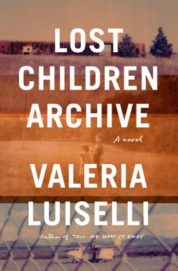 VL: I think philosophy gave me a different approach to reading. You can’t skim philosophical texts. You have to read the texts over and over until it sinks in, whether it’s a paragraph or a single sentence. It’s like reading poetry. It’s a different way of reading and I’m happy I chose that path. I became a reader thanks to my professors and the texts I was exposed to in my late teens and early twenties. To be honest, I was more than influenced by philosophy—I was obsessed. I thought that anything that was not philosophy was trivial. I liked everything, from the pre-Socratic aphorisms that would make me sit down and think for a long time, to philosophers that wrote about the contemporary world, like Hannah Arendt and Walter Benjamin, to the more dry, analytic philosophers, like W.V.O Quine or Gottlob Frege. I read Hume with a lot of interest, as well as Gadamer. I tried to like Heidegger, but there was a baroque-ness in the language to which I never quite connected. (Perhaps it was the way he was translated into Spanish.) Wittgenstein was one of the philosophers that I read the most. At the time we were reading Wittgenstein, we also had very rigorous classes in logic and set theory, the more mathematical side of philosophy. I preferred the sparseness of Wittgenstein. Unfortunately, we read very few women. I read Maria Zambrano, a Spanish philosopher who arrived in Mexico as an exile. She was the only Hispanic woman that I was reading as a philosopher. Rarely did teachers move away from the canon.
VL: I think philosophy gave me a different approach to reading. You can’t skim philosophical texts. You have to read the texts over and over until it sinks in, whether it’s a paragraph or a single sentence. It’s like reading poetry. It’s a different way of reading and I’m happy I chose that path. I became a reader thanks to my professors and the texts I was exposed to in my late teens and early twenties. To be honest, I was more than influenced by philosophy—I was obsessed. I thought that anything that was not philosophy was trivial. I liked everything, from the pre-Socratic aphorisms that would make me sit down and think for a long time, to philosophers that wrote about the contemporary world, like Hannah Arendt and Walter Benjamin, to the more dry, analytic philosophers, like W.V.O Quine or Gottlob Frege. I read Hume with a lot of interest, as well as Gadamer. I tried to like Heidegger, but there was a baroque-ness in the language to which I never quite connected. (Perhaps it was the way he was translated into Spanish.) Wittgenstein was one of the philosophers that I read the most. At the time we were reading Wittgenstein, we also had very rigorous classes in logic and set theory, the more mathematical side of philosophy. I preferred the sparseness of Wittgenstein. Unfortunately, we read very few women. I read Maria Zambrano, a Spanish philosopher who arrived in Mexico as an exile. She was the only Hispanic woman that I was reading as a philosopher. Rarely did teachers move away from the canon.
AV: Would you consider yourself religious or nonreligious?
VL: Unfortunately, I’m not religious at all. I think I have moments in my life where I can connect to spirituality. For instance, reading Simone Weil—it’s hard for me to read her work because my brain has to perform a constant operation: I need to replace the words “god” with “spirit” or “reason” when I read her sentences, if I want to embrace her very lucid thoughts. Nevertheless, thanks to a writer like Weil, I think I have had moments of a deeper connection to a sense of spirituality. Weil also has one of the most lucid essays on pain.
AV: Your previous book, Tell Me How It Ends: An Essay in 40 Questions (Coffee House Press, 2017), can be seen as a prelude for Lost Children Archive. What was the inspiration for Tell Me How It Ends?
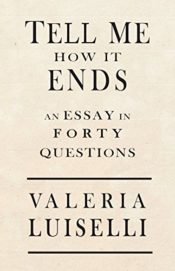 VL: It’s interesting that Tell Me How It Ends will always be read as a prelude to Lost Children Archive. It came out several years before Lost Children Archive, and it may serve as an explanatory backdrop of the political crisis that is unfolding within the pages of Lost Children Archive. But I started writing Lost Children Archive first in the summer of 2014, during a road trip with my family, long before Tell Me How It Ends. When we returned to New York, I became more deeply involved with the crisis within the space of the immigration court in New York. I started screening and translating in court for children who had just been put on the priority docket. They had just been bumped up in priority for cases being addressed, which means they had less time to seek lawyers. They used to have one year, but now they only had twenty-one days to find a lawyer. Many volunteers had to help screen and find lawyers for the kids so they wouldn’t get deported.
VL: It’s interesting that Tell Me How It Ends will always be read as a prelude to Lost Children Archive. It came out several years before Lost Children Archive, and it may serve as an explanatory backdrop of the political crisis that is unfolding within the pages of Lost Children Archive. But I started writing Lost Children Archive first in the summer of 2014, during a road trip with my family, long before Tell Me How It Ends. When we returned to New York, I became more deeply involved with the crisis within the space of the immigration court in New York. I started screening and translating in court for children who had just been put on the priority docket. They had just been bumped up in priority for cases being addressed, which means they had less time to seek lawyers. They used to have one year, but now they only had twenty-one days to find a lawyer. Many volunteers had to help screen and find lawyers for the kids so they wouldn’t get deported.
I became involved with this kind of work while I was writing the novel, and what happened is I started using the novel as a space in which to pour all my angst and fury and political frustration and emotional sense of stalemate. But I slowly started to realize I wasn’t doing justice to the novel by trying to turn it into that kind of vehicle for my politics, and I wasn’t doing justice to the subject matter itself, either, because I was trying to thread it into this fictional narrative. So I stopped writing the novel. Then, John Freeman, whom I’d worked with as an editor in different projects, suggested I write a non-fiction piece on what I was witnessing in court. I kept saying no, I can’t, because I don’t understand immigration law well enough, I’m too caught up, I can’t write this, etc. And as good editors do, he insisted and insisted, until I gave in. I’m now very thankful that he encouraged me to write that essay. I wrote the first version of Tell Me How It Ends as a short essay, and he published it in Freeman’s Journal. Once I had done that, I was able to go back to the novel and not feel the responsibility of directly covering the crisis. I could focus on other issues and allow the novel to breathe with fictional lungs, so to speak.
AV: Some of the statistics you mention are shattering: 80% of migrant women and girls are raped and 120,000 migrants since 2006 have disappeared. In which countries do the rapes take place? Of the missing 120,000 what do you think happened to them?
VL: Most of this takes place in Mexico, which is shattering and fills me with shame as a Mexican. Central American kids come out of horrific circumstances only to come into deeper horror in Mexico. They eventually make it into the United States, if they make it all the way, where there is still more horror awaiting them.
The train routes known as La Bestia became one of the most common modes of transportation for migrants moving across Mexico. Along the routes of La Bestia, drug lords, gang members, policeman, and military started abusing these migrants. The rapes and disappearances have a lot to do with the collusion between these different forces, with no accountability. People can disappear, and then reappear in a mass grave, and there is no one that is going to be held accountable. The trend in Mexico and the U.S. has been towards criminalization and incarceration. The governments either violate a person’s right to due process or they are incarcerated while they await due process—if it’s going to happen at all. The difference in the U.S. is that incarceration is part of the industrial prison complex, and it’s profitable.
AV: In the Columbia Magazine (Winter 2018) you said, “I’m not interested in intertextuality as an outward, performative gesture but as a method or procedure of composition.” Can you elucidate on this and how it applies to Lost Children Archive?
VL: There are these concepts that come up again and again, mostly in interviews, when I talk about my writing. I’m often asked about intertextuality and autofiction and meta-literariness. I think my qualms with those labels are that they often serve as a dike to an otherwise potentially interesting flow of conversation. It’s like they place a label and there is just no more to say about a book. Maybe a text is intertextual but how so? How does it incorporate other references and place different books within a constellation to create interesting tensions? Often, labels like those end a conversation rather than begin it.
Intertextuality, for me, is just the process by which I work. I write with books all around me. Often a sentence or image I’m working on might remind me of something I read ten years ago. So I go back to that book and try to unearth it, and it makes me think of something else, so I go to another book, and so on and so forth. All these things speak back into the book I’m writing. I’m interested in relationships, method, and how the method imprints itself in the final result. I’m interested in shortening the distance between the method and the result, and by this I mean allowing the method to leave fingerprints of itself in the final result. In my case, books are in conversation while I’m writing.
AV: Lost Children Archive tells the story of a family driving from New York City to Arizona to do the husband’s sound recording project while the wife tries to find two missing Mexican migrant girls. Early on the daughter is swimming in a pool and the worried mother states, “a friend of mine calls this ‘the rescue distance.’” Your reference to Samanta Schweblin’s novel Fever Dream (originally called Rescue Distance in Spanish) is a good analogy. There is also a video of both of you being interviewed about literature and the importance of Juan Rulfo’s Pedro Paramo. How much of an impact have such writers had on you?
VL: Rulfo is a writer that Schweblin and I have surely discussed as a major influence. Pedro Paramo is this tiny, but monumental novel in the Spanish-speaking tradition that really broke with the linear conception of time and space which is pervasive in most novels. Rulfo did something that was completely different, in a way that gave all his readers and following generations a sense of freedom. Yet to say one is influenced by Pedro Paramo is like being a musician who says he or she is influenced by Bach.
AV: What about Borges and Cortázar?
VL: They were very influential to my generation, that was our canon—Borges, Cortázar, García Márquez, Rulfo . . . Most of us came of age reading very few women writers. We had to go out and actively find them. I would say the current Latin American generation of writers is primarily a female generation. While there are some great male writers, the ones who I admire, seek out and read the most are women.
AV: “All I see in hindsight is the chaos of history repeated, over and over, reenacted, reinterpreted, the world, its fucked-up heart palpitating underneath us, failing, messing up again and again as it winds its way around a sun. And in the middle of it all, tribes, families, people, all beautiful things falling apart, debris, dust, erasure.” This negative view of the world propels the mother to action: “I am not sure how I'll do it, but the story I need to tell is the one of the children who are missing, those whose voices can no longer be heard because they are, possibly forever, lost.” Did you have an epiphany like this to write Lost Children Archive?
VL: Damn, I was in a dark place. I don’t think one could feel otherwise in the context of what I was seeing. What we are seeing, all around us. Pockets of fascism and extreme right-wing politics sprouting across the globe, along with a growing intolerance to different points of view, even within the so-called left. And then surveillance, be it the NSA or the companies that rule our lives. And also, of course, the current global exodus of people in search for conditions that make life livable. Not since the end of World War II has there been a global exodus like the one in these past few years. And the response of countries to which people migrate is usually inhumane, even brutal. The USA, in particular: mass incarceration of asylum-seekers is now the normal procedure here.
In any case, I wrote this novel while being very angry and disappointed. I was thinking about ways of documenting and of telling a stories that might restore in us a more compassionate, lucid, and reflective understanding our way of being in the world. We’ve become voracious agents of mass consumption, entertainment, Netflix series, and health products. But we’re losing touch with our fundamental human values. We are losing touch with a sense of community, and mutual responsibilities. I know it sounds a little naïve but I really do think we need to slow down, and detach from some of these things that are sold to us as vehicles to happiness, but which do not really create any lasting, deeper bonds between us. What I do think creates more lasting and deeper bonds is sharing stories, communicating, talking to each other, listening, and understanding. And I do think literature has played and will continue to play a crucial role in keeping the social fabric together.
AV: There is an emotional scene in which the mother sees migrant children in New Mexico being put on a plane to fly back to their home country. Did you see something similar to this?
VL: No, I’ve never witnessed a deportation. I’ve seen people at airports in custody of border patrol or ICE, I’ve been in detention centers, and in border-crossing points along the existing portions of the southern wall, but I’ve never seen a deportation like the one I described in the novel. I read about a deportation while I was driving through New Mexico, and it created an impact on me, but I didn’t witness it. I think it probably happens often in my work that people read it as a memoir, or a blurring of the boundaries between fiction and nonfiction. I guess I am writing documentary fiction—fiction that comes from documenting, but is nonetheless fiction.
AV: When you start the “Deportations” chapter, you switch narrators from the mother to the son. Why did you do this, and was it difficult to write from a ten-year old boy’s perspective?
VL: It was difficult to write from a ten-year old boy’s perspective, but it was also a very liberating space. I don’t write linearly. It’s not like I wrote the woman’s thread, then the boy’s thread, and then the elegies. I wrote them all together. They all splintered from a common gravitational center and grew in different directions. Because it’s a novel of echoes, there are echoes between different scenes and threads. I would often write a scene in one voice and then have an echo in another voice. The boy’s voice, in that procedure, felt like a playground, kind of a sad playground at times. It would always get at me, but it was also freeing to have that rhythm to go back to from time to time.
AV: “Echo Canyon” covers about twenty pages in a Joycean stream-of-consciousness, even using Joyce’s repetition of the word “yes” just like at the end of Ulysses. The chapter’s climax is where the supposedly “real” boy and girl meet with the fictional Elegy children. It’s like a parallel universe where reality meets unreality. Can you extrapolate a bit about what you are trying to achieve with this interesting literary concept?
VL: That was the hardest part of the novel to write, as you can imagine, because it required a difficult, delicate architecture. Not only is it a run-on sentence, but it changes narrators every time one of the narrators focuses on the sky above the valley; yet the children are moving towards each other, unknowingly. Every time a narrator looks at the sky in which thunderclouds and birds are gathering, it switches to the other narrator. Joyce of course was in my mind, but I was also thinking of Juan Rulfo, Jerzy Andrzejewski, and László Krasznahorkai.
I don’t want to offer an interpretation of that passage, though, because when authors do that they kind of drown the possibility of other minds coming in and offering other interesting interpretations. Let me just say that that part of the novel –that is spoken by the boy into the recording machine, and then passed to the sister as a version of their story—is a culmination of all the stories the boy has been listening to: his mother talking about the crisis on the border, his father talking about the Apache wars; the books they are reading, among which are the elegies of lost children. It all comes together in the same way that books become part of our own experience without us necessarily having lived those experiences. Literature is like a prosthetic memory. There is a Borges story called “Shakespeare’s Memory,” in which a scholar receives a ring which supposedly will give him access to Shakespeare’s memory. It will implant Shakespeare’s memory in his own mind. The story follows what happens in his mind as Shakespeare’s memory enters and mixes with his own. Ricardo Piglia, a brilliant Argentinean writer and scholar, interprets that story as an allegory about literary memory, about how we incorporate experiences that we have read, and how they become part of the webbing of our own lived experience.
Click here to purchase Lost Children Archive
at your local independent bookstore

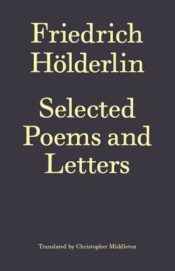 Friedrich Hölderlin
Friedrich Hölderlin
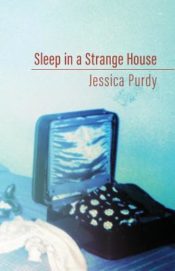

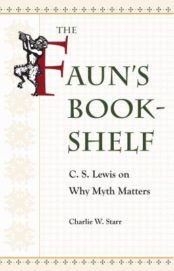
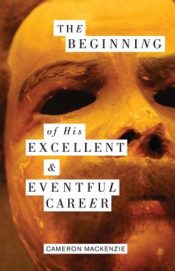
 by Allan Vorda
by Allan Vorda

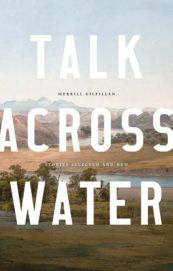
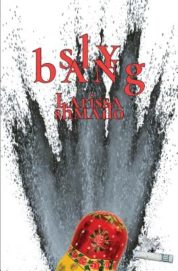
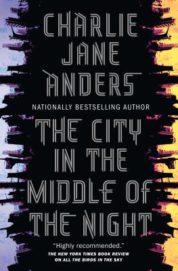

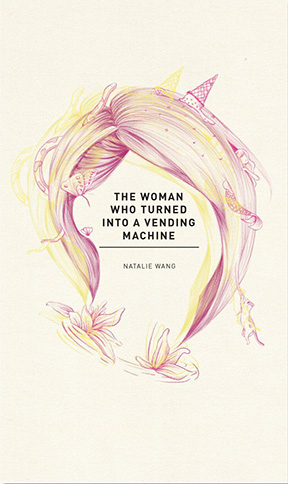 The Woman Who Turned Into A Vending Machine (2018) by Natali Wang defies the rigidity of genre to approach folklore and mythologies through experimentation. Wang writes of her own experiences of love and relationships, matching them with famous, historical records. From the selkie bride myth to the Ramayana to various Greek and Chinese myths, Wang’s poetry has its roots and inspirations scattered across the globe. These works are a rearrangement of the perceived reality of history and the present; they are mythological, and they also speak to contemporary love and strife. In Wang’s writing transformation is both literal and allegorical; in “(Painted Skin)” she writes: “Her favourite time of the day is when she gets home and climbs out of her skin, splitting it at her nape and peeling it down the rest of the body.”
The Woman Who Turned Into A Vending Machine (2018) by Natali Wang defies the rigidity of genre to approach folklore and mythologies through experimentation. Wang writes of her own experiences of love and relationships, matching them with famous, historical records. From the selkie bride myth to the Ramayana to various Greek and Chinese myths, Wang’s poetry has its roots and inspirations scattered across the globe. These works are a rearrangement of the perceived reality of history and the present; they are mythological, and they also speak to contemporary love and strife. In Wang’s writing transformation is both literal and allegorical; in “(Painted Skin)” she writes: “Her favourite time of the day is when she gets home and climbs out of her skin, splitting it at her nape and peeling it down the rest of the body.”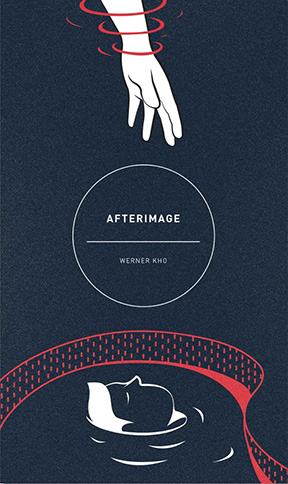 Another debut collection in Math Paper Press’s current catalog is Werner Kho’s Afterimage (2018). As the title would imply, the book homes in on themes of loss, the remaining substances, and the reimagining of the past to inform the present and future. What is the image that comes after the action, after the result of decision and happenstance? In “Dark Room,” the poet writes: “I am feeling / for the negatives: shadows // tangling in our confusion / of tongues, unclaimed spaces // of exposed longing.” Kho explores these ideas of periphery and possession both mournfully and methodically, exposing the fade of our experiences and the trajectory of the fade.
Another debut collection in Math Paper Press’s current catalog is Werner Kho’s Afterimage (2018). As the title would imply, the book homes in on themes of loss, the remaining substances, and the reimagining of the past to inform the present and future. What is the image that comes after the action, after the result of decision and happenstance? In “Dark Room,” the poet writes: “I am feeling / for the negatives: shadows // tangling in our confusion / of tongues, unclaimed spaces // of exposed longing.” Kho explores these ideas of periphery and possession both mournfully and methodically, exposing the fade of our experiences and the trajectory of the fade.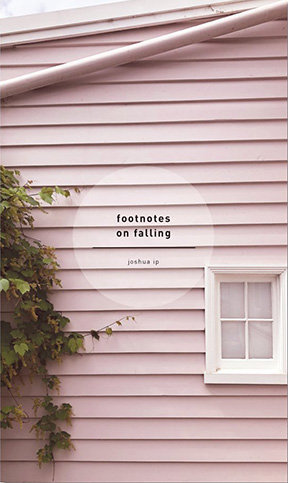 Beginnings and ends and aftermaths are dominant forces in footnotes on falling (2018) by Joshua Ip. The most conceptual in form and experimental in grammar of the four books reviewed here, footnotes is concerned with awkwardness, scattered thoughts, and a shuffled existence revisited. It is a book about shame and failure, strangeness and wonder. Its poetry is carried along by revelation and commentary and translation and the art of drawing conclusions, as exemplified in “The Letters”: “let’s say we let / this slide. let / pressure bleed. let / time tell. let the children / come to their / p000own conclusions.”
Beginnings and ends and aftermaths are dominant forces in footnotes on falling (2018) by Joshua Ip. The most conceptual in form and experimental in grammar of the four books reviewed here, footnotes is concerned with awkwardness, scattered thoughts, and a shuffled existence revisited. It is a book about shame and failure, strangeness and wonder. Its poetry is carried along by revelation and commentary and translation and the art of drawing conclusions, as exemplified in “The Letters”: “let’s say we let / this slide. let / pressure bleed. let / time tell. let the children / come to their / p000own conclusions.”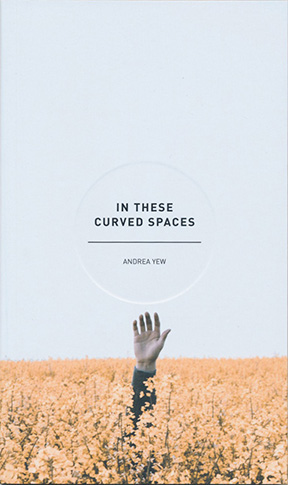 The three-part In These Curved Spaces (2019) by Andrea Yew provides another form of exploration: the phenomenon and process of sequence. Basing many of the poems on familial experiences and situations both recent and distant, Yew explores these spaces in logical ways. “An entire family sprang from the obliteration of another,” she writes. “The Prayer Poem” dictates the framing of logic and construct within Yew’s world. It is as maddening as it is filled with clarity, structure, and organization.
The three-part In These Curved Spaces (2019) by Andrea Yew provides another form of exploration: the phenomenon and process of sequence. Basing many of the poems on familial experiences and situations both recent and distant, Yew explores these spaces in logical ways. “An entire family sprang from the obliteration of another,” she writes. “The Prayer Poem” dictates the framing of logic and construct within Yew’s world. It is as maddening as it is filled with clarity, structure, and organization.